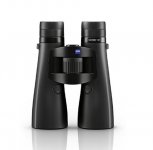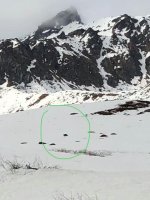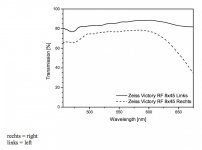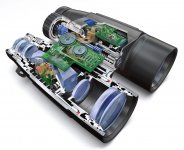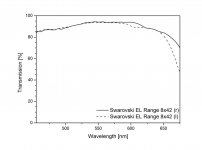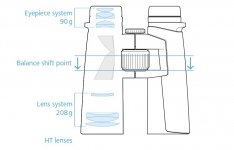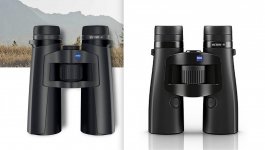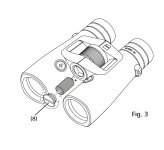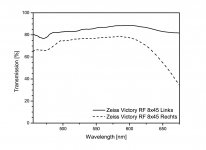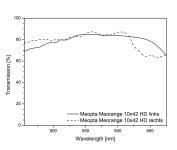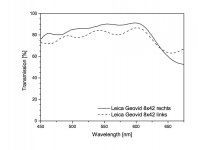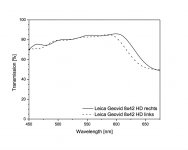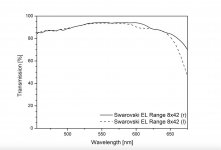Gijs indicates in post #8, that there is still a significant difference between the transmission of the 2 barrels (a consequence inherent to the rangefinder design used by Zeiss)
However, as to:
- how perceptible the difference is in use, and
- what effect that has on viewing comfort and usability
seems to vary markedly between individuals
See the difference in these comments:
https://www.birdforum.net/showthread.php?t=373583
And also the comments of Canip here in posts #9 and #14
(I Googled around but couldn’t find any other useful comments on the transmission disparity)
To my knowledge, Zeiss has not published any detailed information about the primary optical system of the current generation rangefinders
However, I’ve noticed several comments where it’s assumed to be the same as that of the current HT binoculars (see the image of an HT x42)
And if only for the sake of production simplicity that would seem to be a reasonable assumption
Additionally, based on the cross-section in my previous post, the optics of the previous generation RF’s do appear to have been similar to their non-RF counterparts
However, similar - in terms of the numbers of lenses and groups - is not identical e.g. lens curves and thicknesses, composition and spacing
And it’s unknown what alterations may have been needed to incorporate the RF function
Interestingly, both the current rangefinders and the HT binoculars have the same overall length in their respective x42 and x54 pairings,
so I cobbled together a comparison image of the x42’s
From the front of the focuser going rearward, the handling would appear to be similar
And forward of the focuser, the RF's barrels are obviously expanded to incorporate electronics, with the battery housed in the lengthened bridge arms (see the image from the manual)
John




